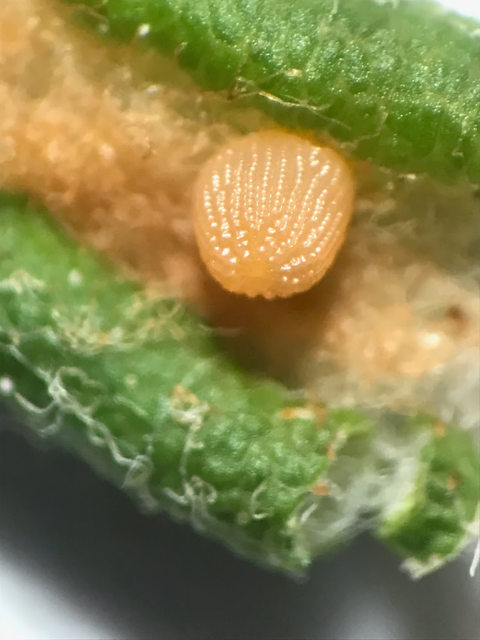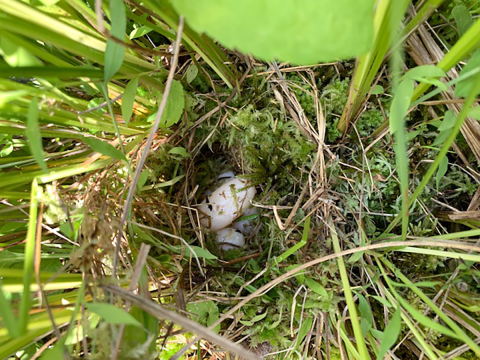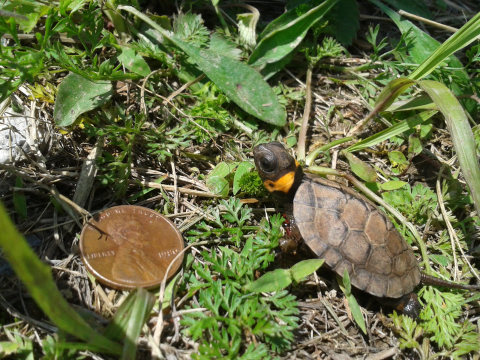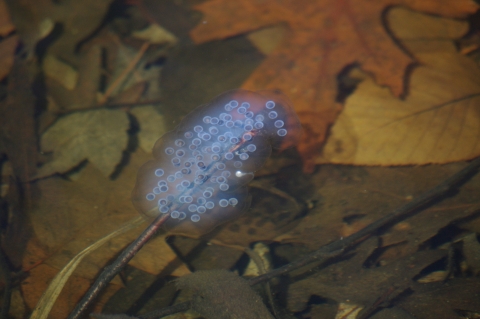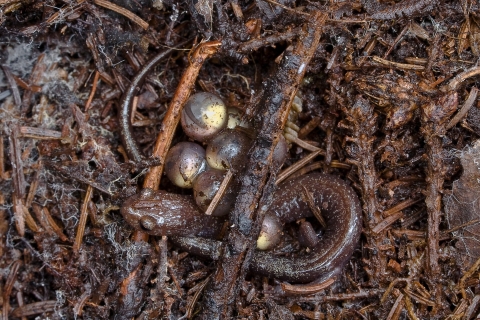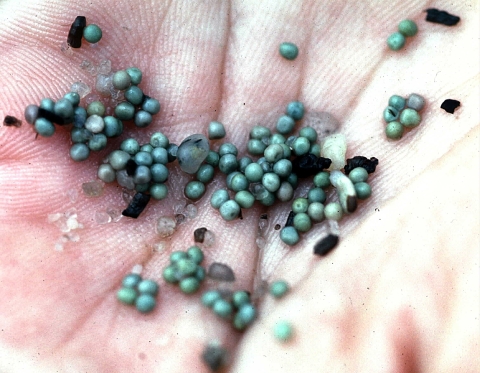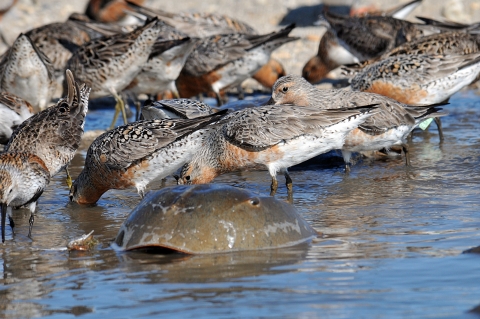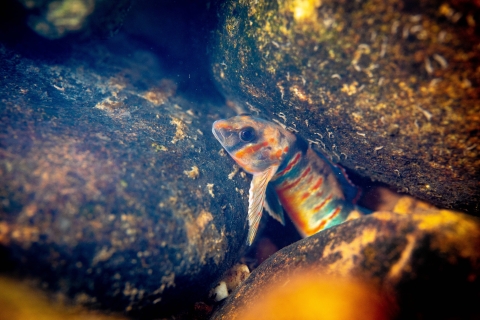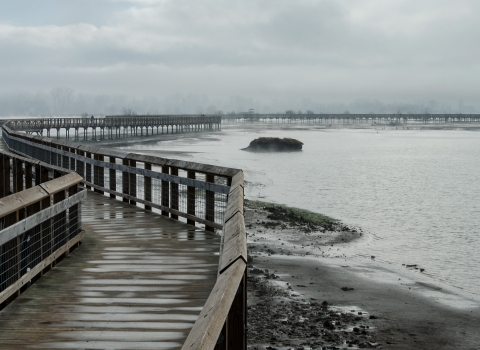Spring is the season of renewal and rebirth. While the trees are budding and the birds are singing, many other quiet critters are laying their eggs as spring sunshine begins to thaw the northeast. While chickens are our most notorious egg-layers, other oviparious animals include most fish, amphibians, reptiles, birds and insects. Meet some of the more unusual animal eggs and the unique adaptations that help them to survive!
Gum drop or butterfly egg?
The White Mountain fritillary egg lives life to the extreme. Found only above altitudes of 4,000 feet in the subalpine tundra of New Hampshire’s White Mountains, the White Mountain fritillary is tough to its core. Tiny gum drop eggs are laid in late summer. The larva that will hatch spend the next nine months experiencing some of the most extreme weather conditions in the world, including avalanches, sub-zero temperatures, and hurricane-force winds. The larva survives its first, harsh winter by eating only its own eggshell! As an adult butterfly, the small but mighty fritillary waits until the White Mountain weather is sunny, near 60°F, and minimal wind before it can take flight. The unforgiving conditions of the White Mountain fritillary's habitat make conservation of this unique species a tough egg to crack!
Beauty in the bog
North America’s tiniest turtle, and one of the rarest, lays an impressive egg for its small size. The chocolate-colored shell of the female bog turtle measures only about three to four inches in length, but in one clutch this small turtle but can lay up to six eggs, each egg measuring about an inch long! Tiny hatchlings emerge in late August and September and can live for as long as 60 years. True to its name, bog turtles need high quality wetland and bog habitats for nesting and basking. These essential wetlands are often threatened by human development and fragmentation. Through the Delaware Watershed Conservation Fund, bog turtles, wildlife habitats, and people are benefiting from conservation projects throughout the Delaware River watershed.
Spotted! Salamander eggs
Vernal pools are an oasis for eggs, including those of the spotted salamander! These temporary pools of water may only last for the spring season, but they provide the perfect wetland habitat for amphibians of all types to safely lay their eggs and avoid fish predators. Each spring, on the first rainy night above 45°F, a mass migration of salamanders ventures out on their Big Night, travelling up to a half mile to reach their vernal pool breeding grounds. There, spotted salamanders can lay egg masses containing 200 eggs or more. It has been discovered that in some instances, spotted salamander eggs contain algae, which consumes carbon dioxide and increases the oxygen levels within the salamander egg -- a mutually beneficial relationship!
In contrast, the cheat mountain salamander doesn’t rely on vernal pools at all. Found in West Virginia’s Cheat Mount region, this rugged salamander lays just 8-10 eggs in the cracks of decomposing logs, with the female sticking around to defend them from predators. These salamanders undergo a metamorphosis while still inside the egg and hatch out looking like miniature adults.
Fuel for the flight
This incredible egg layer is older than the dinosaurs! Horseshoe crabs look like living fossils. They've remained largely the same for 350 million years and are more closely related to scorpions and spiders than today’s crabs. Each summer, the Delaware Bay hosts the most spectacular horseshoe crab spawning event in the world, drawing millions of crabs to the shores to deposit eggs deep in the sand, some laying up to 20,000 eggs in one night. Eggs laid in shallow sand or exposed by waves are readily consumed by migratory birds, like the rufa red knot. This mid-migration buffet gives the threatened bird species the energy they need to complete their 10,000-mile migration!
Colorful candy darter
It’s no surprise fish eggs are funky, but these ones take the yolk. Don’t be fooled by the photo, these colorful eggs are only two millimeters in length and are almost never seen by humans in the wild. These eggs came from a tiny, female fish with hybrid genetics, a cross between a variegate darter and a candy darter. The hybridization of these two species represents the number one threat to the federally endangered candy darter. When introduced into candy darter habitat, variegate darters outcompete candy darters for space, food, and even mates. After multiple generations of breeding between species, candy darter genes — and their vibrant colors — can be diluted from the population. Learn how staff at White Sulphur Springs National Fish Hatchery are working to propagate candy darters to boost their population in the wild.
While these impressive eggs may provide inspiration for egg decorating, be sure to keep a respectful distance if you come upon them in nature. The eggs are more likely to hatch if left undisturbed and you may be lucky enough to enjoy a sight of the hatchlings one day.

